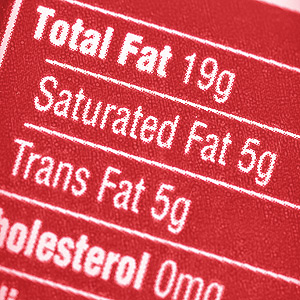
Of all the types of fat we consume — saturated, polyunsaturated, monounsaturated and trans fat — the two that increase our risk of coronary artery disease are:
- saturated fat (found in beef, butter, cheese, milk, coconut or palm oils)
- trans fat (deep-fried fast foods, most bakery pastries, packaged snack foods, margarines and crackers)
In fact, according to Mayo Clinic, trans fat may be worse than saturated fat because, unlike saturated fat, it both raises your low-density lipoprotein (LDL or “bad” cholesterol), and lowers your high-density lipoprotein (HDL or “good” cholesterol). Here’s more about fat:
1 Sixty-six percent of North Americans are overweight or obese, with the obesity rate doubling between 1976 and 1999.
2 The average Canadian adult woman consumes 2,300 calories per day. The average Haitian adult woman consumes half that number.
3 People who regularly eat dinner or breakfast in restaurants double their risk of becoming obese.
4 Being overweight reduces a woman’s chances of getting pregnant.
5 The National Institutes of Health believe obesity is one of the reasons why the fastest-growing group of women experiencing infertility are those under 25.
6 We’re trying. Each year nearly $50 billion is spent on diet programs.
7 People who lose just 10% of their weight report significant improvement in their sex lives.
8 Biology is trying to help too. Leptin is a hunger-slaking hormone pumped into the bloodstream by fat cells. The more fat you have, the more leptin you make and the less hungry you feel.
9 Want to get your hands on some leptin? The hormone never panned out as a diet aid because most overweight people have become insensitive to it.
10 Over the course of a year, about 10% of an adult’s fat cells die. Alas, the body promptly replaces them.
11 The total number of fat cells in your body remains constant once you reach adulthood. Even after radical weight-loss procedures such as stomach banding, fat cells return to their pre-surgery numbers within two years.
12 Liposuction is the only way to actually reduce the number of fat cells in your spare tire. Diet and exercise just shrink them.
13 New Zealander Pete Bethune gave a whole new meaning to biofuel when he used his liposuctioned fat to power the world’s fastest eco-boat. A way to solve the obesity epidemic and the fuel crisis?
14 It may make you prettier, but not healthier. Liposuction doesn’t remove fat from around the internal organs, so your fat-related health risks are unchanged.
15 Blame Mum and Dad. Obesity is more inheritable than schizophrenia, high blood pressure, and alcoholism.
16 Cutting saturated fat intake to the recommend 10% of your daily calories will prolong your life, researchers have found.
17 The brain is about 70% fat.
18 Bottlenose dolphins use fatty tissue in the head, concentrated in an organ called the melon, to focus sound waves, giving them their sonar ability.
19 Think you have a spare tire? Whales are wrapped in fat—a thick layer of blubber—as vital insulation against the cold. Some whales have a blubber layer up to 20 inches thick.
20 Camels have the opposite problem: Living in hot climates, they want as little heat-trapping insulation as possible, so they concentrate their fat in their humps.
See also: Body Fat: brown, white, visceral, belly, butt

Note: Information on this site is not intended as a substitute for medical advice

Thanks for sharing this list. Very true, some of this was NEWS to me.
LikeLike